Self-reliance has always been a key feature of agriculture. Farmers and their families have long understood the importance of their work and their ability to get produce to market. The American food supply depends on this self-reliance.
COVID-19, however, has revealed a weakness in this system. Farmers and agricultural professionals have long relied on people farther down the food supply chain to handle marketing. When the pandemic hit, the supply chain broke down. As a result, grocery store shelves went empty, and farmers’ produce went unsold.
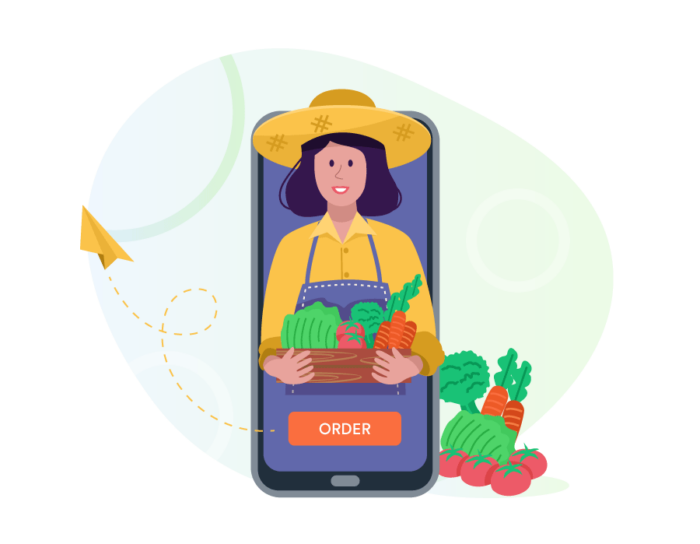
It’s time for farmers to embrace agricultural marketing on their own terms, in a manner that cuts out intermediaries and connects food producers directly with customers.
This is important in light of certain trends:
- First, the United States is a majority urban country. More than half of the population lives in cities and only a fraction in rural areas. That means there are long distances between people and the places where their food is grown.
- Meanwhile, American consumers — and consumers around the world — are demanding more organic produce. They want to know the provenance of what they eat, what went into the production of that food, and that the production processes relied exclusively on organic materials.
- Finally, the impact of COVID-19 cannot be overstated. Food supplies were interrupted as slaughterhouses and warehouses closed over concerns for worker safety. At the same time, consumers relied increasingly on digital shopping to get their groceries. During this transition, good produce went to waste as supply chains broke down.
Traditional notions of self-reliance don’t quite match up to a contemporary world where farmers, distributors, retailers, and consumers are all connected in a complex network. But that complexity can be undercut. It’s just a matter of farmers marketing their products directly to customers.
By developing skills in agricultural marketing, farmers ensure their ability to get produce to the people who want to buy it. This is what self-reliance looks like in the 21st century.
In this guide, we will explore the following aspects of agricultural marketing:
- The agricultural marketing methods available to farmers and producers
- Community-supported agriculture and why you should consider participating
- Where to get started marketing your agricultural produce
- How to set up an online grocery store
- How to optimize that online grocery store so that ordering, payments, and deliveries happen smoothly
Agricultural marketing methods
This section offers an overview of the various ways a farmer or producer can get their products to market.
In this regard, “marketing” takes on a more literal meaning — we’re talking about physically getting produce from the farm to the market. Keep that in mind throughout this discussion. “Marketing” is a metaphor in most industries, but with agriculture, it refers to the original relationship among producers, the marketplace, and consumers. All notions of marketing build on that core relationship.
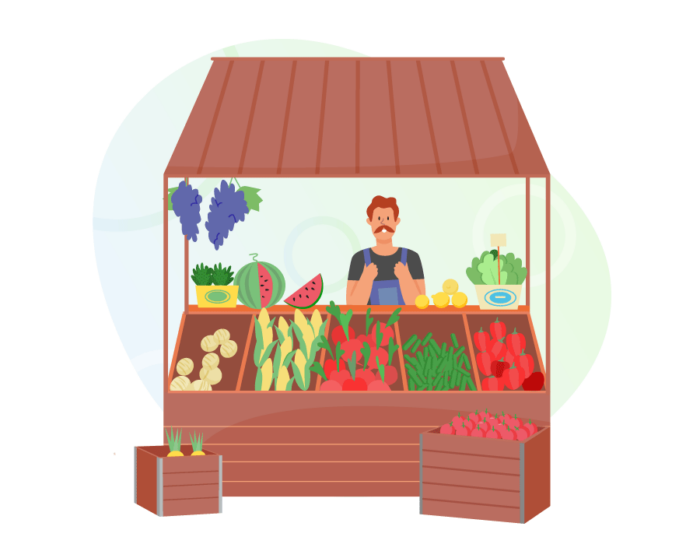
Selling via markets and resellers
A marketing revolution took place for the previous generation of small and mid-scale farmers. Across the United States, they formed networks, alliances, and groups that gave independent farmers access to all kinds of markets, from neighborhood farmers’ markets to supermarket chains.
The promise of these arrangements is enticing: The marketplace network helps iron out the details of doing business so that the farmers can focus on their farming.
Here are a few examples:
- Common marketplaces and farmers’ markets. These can be ideal distribution arrangements for small and medium-scale agricultural producers. These marketplaces give you an opportunity to brand your products and connect face to face with consumers. They also provide a jumping-off point for growth. You can leverage your success at a farmers market, for example, to get your products on store shelves, or to even open your own brick-and-mortar shop. Market operators take care of much of the promotion, too, which saves time and money.
- Intermediaries. Many farmers prefer to sell their produce to one or perhaps a handful of distributors. These distributors then sell the produce to retailers, restaurants, and other places where food is sold or served. This intermediary relationship saves farmers time because they don’t have to look for buyers.
- Supermarkets and local grocers. Independent farmers have only recently begun selling their produce directly to grocery stores. For years, intermediaries made that connection. As consumers grew more and more conscious of the provenance of their produce, however, this created an environment where farmer-grocer relationships could flourish. Today, niche grocers in dense urban areas proudly display the names of the farms from which they source things like meat, vegetables, or honey.
As fruitful as these methods have been for farmers and rural entrepreneurs, they’re the least profitable marketing options. Market operators and grocers offer the ease of doing business in exchange for ownership of the customer relationship.
While working with a distributor can save time and money up front, it leaves money on the table for farmers who are able to build direct connections with customers.
A general rule: The more direct a relationship you have with your customer, the higher the profit potential. The flip side is that you must be willing to put in the work to build and maintain those customer relationships.
Marketing cooperatives
Small and medium-sized farmers recognize the opportunity that direct-to-consumer marketing offers, but many simply don’t have the time or resources to manage that activity. They’re too busy with their farms.
That’s why marketing cooperatives have been on the rise in recent years. These collectives of farmers, producers, and rural entrepreneurs share marketing responsibilities — and reap the benefits collectively.
They do this by creating an independent marketing business in which they all own a stake. The business operates at cost and distributes profits to the cooperative’s members.
If this sounds like a useful method for getting your products to market, here are some things to consider:
- What products will each member sell through the co-op? Ideally, everyone can specialize or differentiate their products in some way. That way, each co-op member can see where their products fit into the larger offering.
- Are there available buyers? Consider the volume your co-op can produce and whether nearby markets or retail outlets have the customer base to consume that volume. If not, you’ll need to look further afield.
- Are you and other producers willing to change products or volume to meet demand? Cooperatives create dynamic partnerships, and individual members must be flexible for those partnerships to last. When there’s a sales opportunity to, say, increase the volume of a certain product fourfold, will other members of the co-op take on their share of production?
Direct to consumer
Direct-to-consumer marketing provides farmers with the biggest upside. With this marketing approach, you interact directly with consumers, build one-to-one customer relationships, and keep all of the profits from that relationship. There are no intermediaries waiting to take a cut.
Direct-to-consumer agricultural marketing is a relatively new model, at least at scale. Farmers have long sold produce to their neighbors, friends, family, and other community members. But digital technology is extending that capability much further.
If you can reach someone online, you can build a relationship with them. The limiting factor isn’t market access but distribution capacity. If your produce arrives fresh to a person’s doorstep, then that person is a potential customer.
Creating that capacity takes significant work, which is why direct-to-consumer agricultural marketing will be the focus of the remaining sections of this guide. We’ll explore building a digital storefront for your produce, how to ensure payments are collected and products delivered, and how to sell organic food online and meet other consumer demands.
Resources for learning about agricultural marketing methods
Here are a few excellent resources on the agricultural marketing methods outlined above:
- Cornell’s College of Agriculture and Life Sciences has several comprehensive guides in its library, two of which cover selling meat and poultry directly to consumers, and one that assesses the different wholesale and direct marketing channels available to farmers.
- The National Center of Appropriate Technology has a narrated slide presentation on forming business relationships with and selling to intermediaries.
- Penn State University professors Jayson K. Harper and Lynn Kime have created a comprehensive guide to marketing fruits and vegetables.
- The USDA maintains a nationwide directory of farmers’ markets so you can find markets that are convenient for you.
The challenges of teaching yourself agricultural marketing
It’s worth repeating that teaching yourself agricultural marketing takes time — something that people running farms don’t tend to have lots of.
That’s the real challenge of agricultural marketing. If you have time to master it, you open yourself up to new opportunities for profit and business growth.
If it makes sense for your business and your family to work with established intermediaries and distributors that handle the marketing function for you, then certainly stick with those partnerships.
If, however, you sense there’s an opportunity to grow your business by taking on more of the marketing function yourself, keep reading to learn how you can do that.
Why you should consider starting a CSA
Community-supported agriculture is a direct-to-consumer model of marketing that works for all kinds of farmers and producers.
The name belies how simple this arrangement really is. In a CSA, members of a community subscribe to the harvest. The farmers use that money to fund their operations going, and in return, the customers/subscribers share in the farm’s harvest. It’s the same relationship stockholders have with the companies in which they own shares.

The community aspect is key because it reveals how tight the bond can be between producer and consumer. The USDA’s National Agricultural Library has a nice overview of the concept: “Community Supported Agriculture consists of a community of individuals who pledge support to a farm operation so that the farmland becomes, either legally or spiritually, the community’s farm, with the growers and consumers providing mutual support and sharing the risks and benefits of food production.”
In exchange for the community’s support, the producers send members boxes of the food they’ve grown that season.
Benefits of a CSA
Operating a CSA has advantages:
- Financial security. Because members pay in advance for their share in the harvest, farmers have access to cash flow during the growing season.
- Distributed risks. Several individual farmers typically contribute to the CSA, so the risk of a bad harvest is spread across several people.
- Access to niche consumer markets. As researchers Timothy Woods, Matthew Ernst, and Debra Tropp wrote in a 2017 report on CSAs, the model has evolved in complexity and sophistication. Today, CSAs can be organized around specific products like flowers or wine. For farmers who have the means to specialize, a CSA can be a good way to bring niche goods to an enthusiastic market.
How to set up a CSA
Once you understand the basics and the benefits of this model of agricultural marketing, figuring out how to start a CSA of your own becomes a little easier.
You need a few key things before you can start building a CSA:
- Space to grow produce. CSAs aren’t limited to farms. If you have a vineyard, an apple orchard, an apiary, or even an urban garden, you have the means to produce marketable goods.
- Space to store, pack, and ship produce. This space needs to fit the size of your customer base. If you plan to ship hundreds of boxes each season, you’ll need the physical space to warehouse and process those orders.
- Tools to collect orders from customers/subscribers. Here’s where digital tools like order forms are useful. Forms let you solicit, track, and organize orders. Depending on how your CSA is structured, shipments may go out once per year or several times per year. Being able to meet member expectations of timely delivery is key, which is why it’s important to track everything digitally.
With these tools and resources in place, you can start planning how your CSA will operate. It might be worthwhile to check relevant statutes and zoning laws first. Then, you should form agreements with all participants; this includes other growers as well as potential members.
Those agreements should take into account
- Planned volume. How much of each item can you produce, and what is the demand? Make sure you can deliver on your promises to your customers.
- Length of the season. Let people know how long it takes to grow the produce and when they can expect their first deliveries.
- Frequency. Some CSAs ship produce to members weekly, others less regularly. Scope out your demand and production capacity to understand how often you can deliver produce.
- Distribution. How will people receive their orders? Will the orders be delivered? Will people have to pick up their orders?
- Pricing. How much will people need to contribute to earn a share of the harvest, and does that represent a good deal? If not, you might lose customers to other distribution channels like supermarkets. At the same time, make sure your prices fairly account for your time and labor, as well as your CSA’s overhead costs.
With the outline, strategy, and agreements in place, you can begin the work of managing your CSA’s operations.
How to manage your CSA
Your CSA’s size and complexity will affect how it’s managed. If you’re a single producer with a handful of subscribers, management can be leaner. If your CSA includes several producers with a variety of produce and many subscribers, managing your CSA may require a lot of effort.
Here are a few important areas of focus:
- Understanding customer demand. Keep up with what your customers like and what products they want. As UW-Madison’s Center for Integrated Agricultural Systems (CIAS) points out, many CSA farmers send surveys to subscribers at the end of the year to get feedback. Again, this is something digital forms could easily facilitate.
- Governance. Larger CSAs tend to form core groups, which consist of the people responsible for bringing the produce to customers. The core group handles orders, customer queries, deliveries, etc. The core group won’t necessarily include the farmers. Understand who has what responsibilities in your CSA and how that work will be divided.
- Labor. As the CIAS notes, many CSA farms rely on volunteers and paid labor. If your operations will require extra hands, you need to understand the labor and workplace safety laws that apply to your CSA.
How to start marketing
Marketing agricultural products follows the same fundamentals as marketing any other product. Identify your ideal customers, find ways to reach them, and communicate an offer that entices them to buy from you.
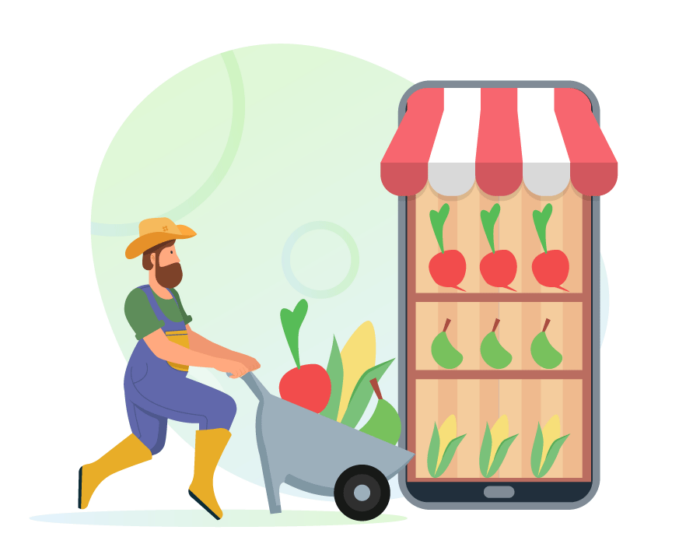
Premarketing checklist
First things first. Before you start identifying and reaching out to customers, you need to make sure you have everything in place to meet the demand your market demonstrates. This includes
- Production capacity. As in the section above on CSAs, you need to define your ability to grow and produce goods before going to market. If you have five acres of apple trees, for example, how many bins of sellable apples does that translate to in a normal year? Knowing this is helpful for understanding the point at which your business breaks even and begins to turn a profit.
- Warehousing your products. This might sound obvious, but having a place to store your produce has a marketing function beyond simply being a good business practice. It allows you to adjust your supply according to market demand. If a farmer selling at a local market fails to sell their supply of cucumbers, for example, those can simply go into storage for later. That allows the farmer to keep per-unit prices lower because less inventory is wasted.
- Agreements with delivery partners. This is a crucial step in getting all your ducks in a row before you begin marketing. Your delivery partners form your supply chain, which is the lifeblood of the whole business. Ensure there are agreements in place to distribute your products — and that there are clauses that hold partners accountable for failing to meet the terms of those agreements.
Marketing basics
Every college Marketing 101 course introduces students to the four Ps of marketing: price, product, place, and promotion. Each P defines some aspect of your marketing, and they’re all connected. A change to your product can compel a change in your pricing, for example.
Let’s use that as a framework to cover the basics of agricultural marketing.
- Price. Price is important because most consumers use it as a basis for comparison shopping. In general, it makes sense to price agricultural products at or around market prices. If other farmers are charging $1 for a pound of potatoes, then use that as the starting price for your potatoes. If your potatoes are superior in quality to those others, you could raise your price to signal that quality to consumers. Likewise, you can undercut your competitors by charging 95 cents per pound — so long as doing so doesn’t cannibalize your profit margins.
- Product. Quality and variety allow you to differentiate your offerings in the marketplace. If you can grow better produce than your competitors, or if you can grow a wider variety of produce, then you can lure their customers away.
- Place. This refers to where you get your products in front of your customers. In a farmers market? On a grocery store shelf? Via a CSA? Each marketing channel has its own internal norms that affect how you promote, how you price, and what you sell. If you sell premium, high-quality organic honey via a CSA, for example, it wouldn’t make sense to sell non-premium produce via that same channel.
- Promotion. Promotion mostly refers to the marketing messages you put out. Promotion could include information about how your produce is certified organic, for example, or it could take the form of a special discount. Promotion and place tend to have a tight relationship. Where you reach your customers impacts what you say.
Building a web presence
Agricultural marketing today must have an online component; it’s the most effective way to reach the largest number of potential customers.
Any professional digital marketing campaign will consist of the following core elements:
- Branding. Branding is all about finding a way to present your business to a wider audience. A good brand will include the business name, a logo for visual representation, and any other marketing collateral you might need to tell the story of your business.
- A website. Learning how to make a website is relatively easy today, as there are many easy-to-use website builders available. Just remember that a website should have a focused purpose, whether that purpose is to directly sell products to your customers (more on this in the next section) or simply serve as a place for your branding and storytelling to live.
- A social presence. Most customers will turn to a company’s website for information about opening times or how to contact the business, but a significant number of people — more than one-quarter of consumers, actually — turn to social media instead. It’s worthwhile to build out at least a basic profile for your business on Facebook, Twitter, Instagram, YouTube, and anywhere else your customers might search for you. Each of those social media platforms presents further marketing opportunities, whether to show photos of new produce on Instagram or to give video tours of your farm on YouTube.
- Targeted advertising. Creating a social media profile isn’t enough to attract customers. You need to reach out to them, and the only reliable way to do this is through paid advertising. Facebook, Instagram, YouTube, and most other social platforms allow you to place paid posts in the feeds of users based on criteria you set. A farmer near Denver, for example, could create an Instagram ad showcasing their produce that would only target other Instagram users in Denver. The ad could let users know the next time the farmer’s produce will be available at a local farmers market.
Customer experience
Most definitions of marketing today account for customer experience, or what it’s like for someone to do business with a particular company.
We normally gauge customer experience intuitively. Think about your favorite coffee place or restaurant. Does the owner know you by name, or do you have a regular order that the staff knows by heart? That’s part of the customer experience, and all businesses benefit from thinking about it strategically.
In agricultural marketing, there are several important aspects of customer experience, including
- Handling payments. If you sell directly to customers in person, chances are some people will prefer cash and others will prefer to pay with a card (or via their phones). Ideally, you’ll be able to handle each method without a problem. If someone pays cash, you’ll have change available. If someone wants to pay with a card or via Apple Pay, you’ll have a tablet- or phone-based card reader that can process those payments. Business.org maintains a running list of the best mobile credit card payment options available to small businesses.
- Order fulfillment. If you deliver products directly to consumers, then how that delivery goes matters. It’s important to have a delivery partner you can rely on to get the right order to the right customer on time. If you hire someone in house to handle deliveries, remember that this is a core part of your operations. Customers care about the timeliness and accuracy of deliveries.
- Handling customer complaints. Customers care about the quality of the produce they buy, and it’s important to respect this when someone comes to you with a complaint about, say, a vegetable that was showing signs of rot. In such instances, the best procedure is to respond quickly, offer an apology, then offer recompensation by way of a refund or future discount. This helps build customer loyalty and protects your business against negative reviews.
Setting up an online grocery store
The COVID-19 pandemic has had a massive impact on e-commerce in general and for online grocery shopping in particular.
In the United States, shelter-in-place laws began to take effect as early as March 2020 in some states and cities. General unease about being in crowded spaces made shopping at the grocery store a less appealing option for many consumers.
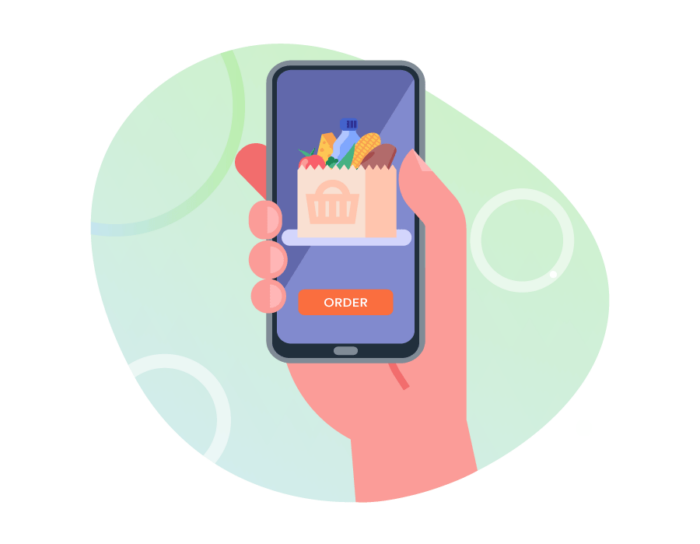
As a result, Americans turned to online grocery stores in unprecedented numbers. As Russell Redman at Supermarket News reported in May 2020, more than half of U.S. consumers said they had bought groceries online at some point within the previous year. This uptick in consumer interest in online grocery shopping is driving increased online revenue. The online grocery category is projected to grow 40 percent in 2020, Redman reported.
The U.S. isn’t alone in this regard. In the U.K., e-commerce now accounts for 13 percent of all grocery shopping, James Coker at Essential Retail reported. Before the pandemic, that number stood at just above 7 percent.
For agricultural marketers, small- and mid-scale farmers, and brick-and-mortar retail outlets, now could be an ideal time to invest in building an online grocery store.
Adding e-commerce to your existing site
If you’ve already built a basic online presence — specifically, a branded website for your business — then adding an online store is fairly straightforward. There are popular tools available that plug into basic websites, have shopping carts and checkout functions, and help track inventory and orders.
Here are some of the most popular options:
- Shopify. For many small businesses that are making their first leap into e-commerce, this is the go-to platform. Shopify lets you build a whole custom store or add a leaner e-commerce feature to your site with a simple “Buy Now” button. If you already list your products on your website, adding the Shopify “Buy Now” button is easy and costs only $9 per month.
- Snipcart. Snipcart is also designed to easily plug into existing websites. The company says you can integrate Snipcart by copying and pasting just two lines of code. A Snipcart shop is highly customizable, and its price is comparable to the Shopify “Buy Now” button integration.
- ESW (formerly known as Scalefast). If you have a large, commercial farm and plan to fill thousands of orders per month, a more robust platform like ESW is your best bet. It takes more time and work to set up a shop of this size because of the complexity involved. But if you would like to ship products internationally, having a business-as-a-service platform like ESW helps you overcome hurdles like taxation, exchange rates, and warehousing.
If you have a little experience coding and building websites, you should be able to add something like Snipcart or the Shopify “Buy Now” button with relative ease.
Otherwise, integrating an e-commerce shop into your website is best left to a professional developer. For small-scale businesses, this work can be done in a matter of hours, and you can expect to sell your produce to customers quickly.
For larger businesses, or for business models like a CSA in which there’s a subscription component, shop integration can take a little more time and can represent more of an investment.
The tradeoff, in any event, is that e-commerce significantly broadens your customer base, which gives you many more opportunities to grow your business. As more consumers embrace online grocery shopping, more agricultural businesses stand to benefit from online retail.
Checklist: The basic setup of an online grocery store
The move to e-commerce can seem daunting. Below is a checklist that will help ensure you’re focusing on the right features and making progress in the right direction as you build your shop.
Your online grocery store will need the following things:
- Product pages. Depending on how wide a variety of produce you sell, it might make sense to have a dedicated page for every single product or perhaps just for each type of product — a page for vegetables, a page for fruits, a page for dairy products.
- Product photos. Photos are crucial in online shopping. Take care to get high-quality images of everything you sell so the customer can see exactly what they’re buying. Since the customer cannot physically inspect the product, as they would in a shop or at a market, it’s up to you to give them all the visual information they need to make an informed purchase.
- Product descriptions. Be thorough in your product descriptions. This is important for the same reason that product photos are important — your customers rely on this information to make informed purchasing decisions. Also check to see if you need to take local, state, or federal regulations into consideration when drafting your product descriptions.
- Shipping and return policies. Spell out precisely what you will and will not do as it applies to both shipping and returns (if applicable). Also, be clear about shipping costs and what the customer can expect to pay for shipping. It’s worth having an attorney assess the language of these policies to make sure you don’t expose yourself to legal trouble.
- Company contact information. Presumably, this is already going to be on your website. Offer your customers a phone number, an email address, and any other contact options you have available. If someone needs to reach out to ask about a shipment or to make a complaint, it should be as easy as possible for them to contact you.
- Optional: Customer reviews and feedback. Many businesses that sell online integrate customer reviews into their product pages. Consumers appreciate honest, unfiltered feedback that comes from people who have bought from you in the past.
Scaling operations for online customers
Once you’re ready to accept orders directly from customers, you must make a number of new decisions about your business operations. At this stage, you’ll have to think about issues such as storing inventory, receiving payments, shipping products, and handling customer complaints.
Below are a few questions to guide you through that process:
- How will you maintain the freshness of the products in your inventory? Agricultural products have a much shorter shelf life than nonperishable consumer goods, so there’s a two-fold challenge here. First, you must ensure you can store your produce in a place where freshness can be maintained. Second, this means quick shipping and inventory turnover. Unless your business is hyper-local, and you can make deliveries yourself, the responsibility of storage and shipment will fall to your partners, at least to some degree. Make sure the companies you partner with have the ability to deliver fresh produce to your customers.
- How will you pack and ship your orders? An important consideration will be the sustainability of your packaging materials. You risk disappointing a major segment of your customer base if you fail to account for this. Look for ways to ensure the quality of your products upon delivery without relying on materials like single-use plastics or extensive wrapping.
- How will you process payments? Payment processing comes built into the e-commerce platforms listed above, but it’s worth mentioning again because of the complexities involved. Handling credit card payments and other digital forms of payment, like Venmo or PayPal, adds another wrinkle to your accounting processes. We’ll discuss payments in the next section.
- How will you deliver customer service? Every business, at some point, will fail to meet a customer’s expectations. Imagine you send a customer a shipment of potatoes that has begun to rot. Consider how you can make yourself available to your customers (by phone, contact form, etc.) and what steps you can take to rectify the problem.
- Will you hire extra staff to handle these tasks? Certainly, e-commerce brings with it new responsibilities to your customers, to your partners, and to your business. Depending on the scale of business you intend to do, it might make sense to hire someone to help with the e-commerce side of the business.
Optimizing your online grocery store
As any business owner knows, a shop is always a work in progress. This applies to online stores as well. There will always be things to improve and optimize. That’s just the nature of entrepreneurship.
The real challenge is knowing where to focus your energies for maximum effect when you make improvements to your shop.
In e-commerce, you can rack up big wins by optimizing online order collection, payment collection, and delivery.
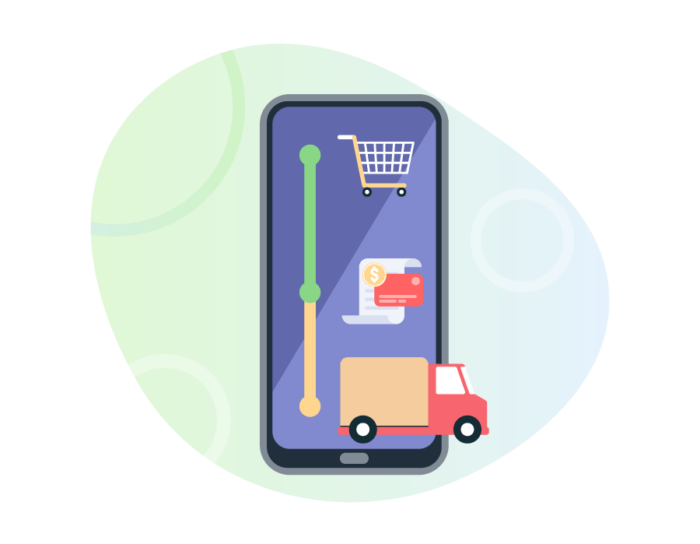
Let’s take these one at a time.
Collecting orders
Order forms specifically designed to collect grocery orders can greatly improve both the customer experience and the performance of your business.
As an example, take a look at this grocery order form from JotForm. The form makes it easy to list a wide variety of products for sale, and customers can input their contact, delivery, and payment information right on the form. This greatly reduces the friction that customers experience with more complicated shop designs. And the template is robust enough for larger grocers to integrate into their sites.
Perhaps most important, a grocery order form makes order management much easier. Case in point: Napa Grass Farmers in California relies on Jotform order forms to manage customer orders for meat, eggs, honey, and the sample boxes the farm offers.
The business uses the CSA model to market its products directly to members. The members have the option to choose from a variety of products for their delivery, and they can choose the frequency of those deliveries.
Without a well-designed order form, placing an order can be complicated and unwieldy. The Jotform form that Napa Grass Farmers uses, however, organizes the details of each order so that there’s no technical management necessary. Owners John Costanzo and his fiancée Gabriela can see what each member’s preference is and can ship orders accordingly.
Collecting payment
The Jotform grocery order form also contains clear payment options. Because Jotform already integrates with major payment processors like PayPal, Square, and Stripe, it’s easy for shop owners to receive digital payments. They just have to drag and drop their preferred payment method onto the form.
One of the reasons e-commerce in general, and for agriculture specifically, is becoming so popular is because it allows businesses to accept payments online. That’s what opens up the customer base.
Ensuring your shop has intuitive, easy-to-use payment forms will send a signal to consumers that your business is trustworthy and able to make good on its promise of fresh, delicious produce.
Delivery
Agricultural entrepreneurs have a choice to make when marketing directly to consumers: Should they rely on external partners to handle delivery, or can they own the delivery process as well?
For anyone just starting out with e-commerce, it probably makes sense to work with delivery partners, especially if you don’t have the time or resources to cover a wide delivery radius yourself.
As the business grows, however, bringing delivery in house gives you the freedom to optimize and improve delivery, which then opens the door to further business growth. When you own the delivery channel, a simple grocery delivery form can be enough to manage customer orders and delivery times.
Many restaurants are already doing this. Jotform’s delivery forms give restaurants the option to coordinate delivery or pickup with customers, and enables them to collect data about customer preferences so that they can optimize deliveries to match the individual preferences of each customer.
Farmers and agricultural businesses can use those very same forms to optimize their delivery operations. In fact, Jotform can help these businesses manage the entire delivery chain, from the field to the customer’s doorstep.
The power of agricultural marketing
A common theme of this guide is empowerment. Tools available to farmers and agricultural entrepreneurs today create opportunities that simply didn’t exist just a few years ago.
Farmers can now secure capital via a CSA model to ensure they have the resources they need to get the most out of their farms. Farmers also have access to easy-to-use technologies that enable them to circumvent market intermediaries and instead sell produce directly to consumers.
Partnerships and distribution networks have been a boon to farmers in previous generations, but the moment has arrived when agricultural businesses — with only a little tech-savvy help — can claim greater agency over their work. They have the means to raise money and sell shares of a harvest, and to market produce directly to people around the country (or world).
This kind of technology has the power to not just improve the livelihoods of farmers and small business owners but to fortify entire food supply chains. With a robust ecosystem of direct-to-consumer agricultural marketing, perhaps we won’t have future crises in which good produce goes unsold.


























































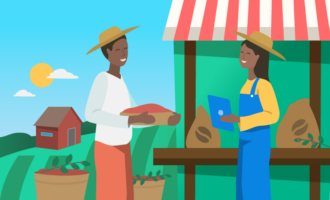
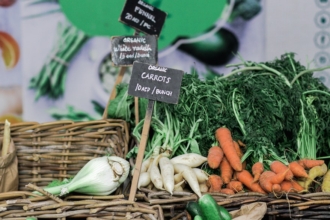



Send Comment:
4 Comments:
More than a year ago
this was really sertsfiying
thank you
More than a year ago
This is really good and digestable.....
Thanks so much
More than a year ago
Outstanding. Congratulations.
More than a year ago
This was a helpful guide. As a farmer, part of my income depends on the farmers’ markets in my area. The coronavirus pandemic hurt our business pretty bad. This summer we started selling some things through Facebook marketplace. The response from local people was more than I could have hoped for.
Now we are looking for ways to sell more online. We still will be as active as ever at the farmers’ markets, but I can see clearly how being able to do business through our website keeps us in business. If there’s another pandemic, we will be ready to deliver to any customer’s front door.